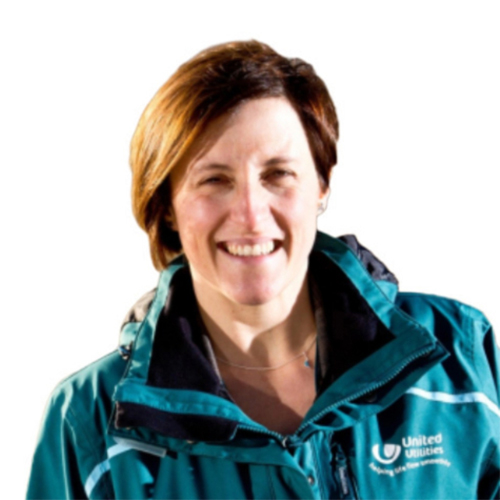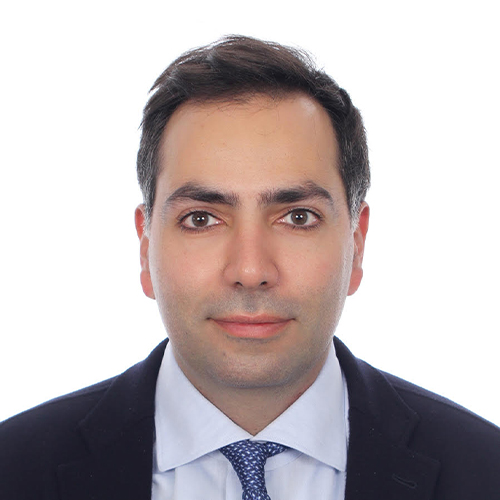Home >
Landing Page >
Spotlight 2025 >
Programme >
In-Focus Forum
In-Focus Forum
24 JUNE 2025, TUESDAY
4:00 PM – 5:30 PM
ROOM 1
The In-Focus Forum showcased six successful case studies and innovative industry solutions aimed at supporting cities build resilience against floods and extreme weather. The forum was moderated by Dr Piers Clark, Founder and Director of Isle Group.
The In-Focus Forum will comprise 6 case studies, including:
Case Study 1: Prioritising Locations to Retrofit Water Sensitive Urban Design Across City of Melbourne
Speakers:
This case study focused on retrofitting Water Sensitive Urban Design (WSUD) features into streetscapes to enhance tree canopy, treat stormwater, and mitigate flooding. In response to growing interest from internal design teams, the City of Melbourne, in collaboration with Arup, developed a digital prioritisation tool to assess site feasibility and identify the potential benefits of WSUD interventions.
Case Study 2: Improving Greater Manchester’s City Resilience with an Integrated Water Approach
Speakers:
Greater Manchester is connected by water, but how it is managed is highly fragmented and issues frequently arise when there is too much water (flooding), too little (droughts) or it is too dirty (polluted waterways). This case study spotlighted Greater Manchester Combined Authority’s (GMCA) creation of a silo-breaking partnership and the development of Greater Manchester Integrated Water Management Plan (IWMP), supported by Jacobs. The IWMP is an industry-defining, integrated framework designed to deliver more value, wider benefits and more sustainable outcomes.
Case Study 3: Flood Mitigation in Metro Manila and the Chao Phraya Basin: From Master Planning to Implementation Strategies
Speakers:
By examining Metro Manila and the Chao Phraya Basin, this case study explored how large-scale flood mitigation has evolved from master planning into coordinated implementation strategies.
Philippines:
In Metro Manila, a megacity of 13 million people, immense flood management challenges are worsened by 2.5 million informal settlers living in flood-prone zones.
On average, 20 typhoons strike annually, with 5 to 7 being destructive—such as Typhoon Carina in 2024, which caused PHP 1.17 billion in agricultural losses. This sets the stage for an adaptive flood master plan in Metro Manila, combining structural solutions like dams with non-structural measures like watershed conservation. In particular, the Metro Manila Flood Management Project Phase 1 aims to modernise 36 pumping stations, build 4 new ones, improve solid waste management to address drainage blockages, and resettle 600 informal settler families facing accessibility and livelihood issues.
Thailand:
In Thailand, the World Bank is supporting the government in the preparation of the first phase (“Plan 1”) of the Chao Phraya flood management programme, acomprehensive, 9-phase initiative with a total cost exceeding US$ 10 billion. The programme seeks to significantly reduce flood risk and enhance climate resilience across the Chao Phraya basin, home to 40% of the population and contributing nearly two-thirds of national GDP. As part of the case study, Plan 1, which focuses on boosting flood routing capacity through upgrades to the irrigation canal system in the basin’s lower-east portion, was presented. However, the initiative faces complex design and implementation challenges, including fluvial flooding, urban drainage, land use conflicts and informal settlements along canal banks.
Case Study 4: Innovative Adaptation Solutions to Improve Hong Kong’s Resilience against Extreme Weather: Tung Chung New Town Extension and Yuen Long Barrage
Speakers:
This case study examined two project cases implemented by the Drainage Services Department (DSD) and Civil Engineering and Development Department (CEDD) of the Government of the Hong Kong Special Administrative Region to build greater resilience to extreme weather events.
Yuen Long Barrage:
Developed by DSD and AECOM, this innovative project integrates stormwater pumps and flood barriers into a unified design to address flooding challenges. Key features include a 300m3/s pumping station and a tidal barrier across 60m width of Yuen Long Nullah near Shan Pui River, which reduces flooding risks while promoting ecological connectivity between the nullah and the river. The initiative exemplifies the use of modern engineering to balance urban flood control with environmental sustainability.
Tung Chung New Town Extension:
CEDD and AECOM have successfully demonstrated Hong Kong’s first and longest eco-shoreline of about 3.8 kilometres. The shoreline mimics the local natural habitat and supports the diverse and resilient marine bio-communities of around 100 species. The Tung Chung New Town Extension (East) reclamation project pioneered the revitalisation of an existing artificial shoreline, bringing eco-logical value and biodiversity to the community. In response to climate change uncertainties, the shoreline design together with the abutting open space promenade also serves as an important infrastructure for coastal resilience. This progressive adaptive approach offers a model that can be readily considered and adopted to meet future challenges.
Case Study 5: Digital Innovation in Valencia's Water Services Restoration during the 2024 Floods
Speakers:
In October 2024, Valencia was hit by catastrophic flooding caused by torrential rains, with some areas receiving over 600 millimetres of rain in just 8 hours. The disaster caused severe infrastructure damage and claimed 228 lives, making it one of the deadliest natural disasters in Spanish history.
This case study underscored Global Omnium’s response to the catastrophe through digital innovation. By leveraging a digital twin of the drinking water network, services were rapidly reestablished with minimal disruption. Advanced leak detection through flow and meter analytics, along with blockage prevention in the sanitary network, were critical in maintaining system functionality. Real-time data from installed sensors enabled swift, informed decision-making, demonstrating the effectiveness of digital tools in enhancing urban resilience.
Case Study 6: Revolutionizing Flooding Simulations in the 21st Technology
Speakers:
Advanced numerical methods, such as the subgrid method (Figure 5), enable the creation of high-resolution, street-level flood maps for accurate city scale compound flooding simulations faster than traditional methods. AI-driven scaling of data and subgrid based models further bring us to near real time flooding predictions without the use of supercomputers. This case study outlined successful application of these technologies in Singapore with complex infrastructure and in a region in Philippines affected by Typhoon Haiyan indicate potential breakthroughs in flood simulation systems for cities.
Case Study 1: Prioritising Locations to Retrofit Water Sensitive Urban Design Across City of Melbourne
Speakers:
- Celeste Morgan, Australasia Integrated Water Management Lead, Arup
- Cintia Dotto, Water Sensitive City Lead, City of Melbourne
This case study focused on retrofitting Water Sensitive Urban Design (WSUD) features into streetscapes to enhance tree canopy, treat stormwater, and mitigate flooding. In response to growing interest from internal design teams, the City of Melbourne, in collaboration with Arup, developed a digital prioritisation tool to assess site feasibility and identify the potential benefits of WSUD interventions.
Case Study 2: Improving Greater Manchester’s City Resilience with an Integrated Water Approach
Speakers:
- Phil Raynor, Director of Water & Environment, Jacobs
- Sarah Jenner, Head of Catchment Planning, Conservation and Partnerships, United Utilities
Greater Manchester is connected by water, but how it is managed is highly fragmented and issues frequently arise when there is too much water (flooding), too little (droughts) or it is too dirty (polluted waterways). This case study spotlighted Greater Manchester Combined Authority’s (GMCA) creation of a silo-breaking partnership and the development of Greater Manchester Integrated Water Management Plan (IWMP), supported by Jacobs. The IWMP is an industry-defining, integrated framework designed to deliver more value, wider benefits and more sustainable outcomes.
Case Study 3: Flood Mitigation in Metro Manila and the Chao Phraya Basin: From Master Planning to Implementation Strategies
Speakers:
- Sanjay Pahuja, Senior Water Resources Management Specialist, World Bank
- Georges Comair, Senior Water Resources Specialist, World Bank
- Ar. Mary Grace G. Ignacio, Planning Officer III, Metropolitan Manila Development Authority (MMDA)
- Emil K. Sadain, Senior Undersecretary, Department of Public Works and Highways (DPWH)
- Dr Adisorn Champathong, Senior Expert on Hydrology, Royal Irrigation Department (RID)
By examining Metro Manila and the Chao Phraya Basin, this case study explored how large-scale flood mitigation has evolved from master planning into coordinated implementation strategies.
Philippines:
In Metro Manila, a megacity of 13 million people, immense flood management challenges are worsened by 2.5 million informal settlers living in flood-prone zones.
On average, 20 typhoons strike annually, with 5 to 7 being destructive—such as Typhoon Carina in 2024, which caused PHP 1.17 billion in agricultural losses. This sets the stage for an adaptive flood master plan in Metro Manila, combining structural solutions like dams with non-structural measures like watershed conservation. In particular, the Metro Manila Flood Management Project Phase 1 aims to modernise 36 pumping stations, build 4 new ones, improve solid waste management to address drainage blockages, and resettle 600 informal settler families facing accessibility and livelihood issues.
Thailand:
In Thailand, the World Bank is supporting the government in the preparation of the first phase (“Plan 1”) of the Chao Phraya flood management programme, acomprehensive, 9-phase initiative with a total cost exceeding US$ 10 billion. The programme seeks to significantly reduce flood risk and enhance climate resilience across the Chao Phraya basin, home to 40% of the population and contributing nearly two-thirds of national GDP. As part of the case study, Plan 1, which focuses on boosting flood routing capacity through upgrades to the irrigation canal system in the basin’s lower-east portion, was presented. However, the initiative faces complex design and implementation challenges, including fluvial flooding, urban drainage, land use conflicts and informal settlements along canal banks.
Case Study 4: Innovative Adaptation Solutions to Improve Hong Kong’s Resilience against Extreme Weather: Tung Chung New Town Extension and Yuen Long Barrage
Speakers:
- Alex Wu, Executive Director, Water, Asia, AECOM
- Raymond Ip, Deputy Project Manager of South Development and Sustainable Lantau Office, Civil Engineering and Development Department (CEDD)
- Doris Choy, Senior Engineer, Drainage Services Department (DSD)
This case study examined two project cases implemented by the Drainage Services Department (DSD) and Civil Engineering and Development Department (CEDD) of the Government of the Hong Kong Special Administrative Region to build greater resilience to extreme weather events.
Yuen Long Barrage:
Developed by DSD and AECOM, this innovative project integrates stormwater pumps and flood barriers into a unified design to address flooding challenges. Key features include a 300m3/s pumping station and a tidal barrier across 60m width of Yuen Long Nullah near Shan Pui River, which reduces flooding risks while promoting ecological connectivity between the nullah and the river. The initiative exemplifies the use of modern engineering to balance urban flood control with environmental sustainability.
Tung Chung New Town Extension:
CEDD and AECOM have successfully demonstrated Hong Kong’s first and longest eco-shoreline of about 3.8 kilometres. The shoreline mimics the local natural habitat and supports the diverse and resilient marine bio-communities of around 100 species. The Tung Chung New Town Extension (East) reclamation project pioneered the revitalisation of an existing artificial shoreline, bringing eco-logical value and biodiversity to the community. In response to climate change uncertainties, the shoreline design together with the abutting open space promenade also serves as an important infrastructure for coastal resilience. This progressive adaptive approach offers a model that can be readily considered and adopted to meet future challenges.
Case Study 5: Digital Innovation in Valencia's Water Services Restoration during the 2024 Floods
Speakers:
- Prof Enrique Cabrera Rochera, Spanish Experts Committee for the Reconstruction after the Valencia Floods, Valencia, Spain
- Joan Carles Guardiola, Business Development Manager, Xylem Vue and former Water & ICT Projects Coordinator, Global Omnium
In October 2024, Valencia was hit by catastrophic flooding caused by torrential rains, with some areas receiving over 600 millimetres of rain in just 8 hours. The disaster caused severe infrastructure damage and claimed 228 lives, making it one of the deadliest natural disasters in Spanish history.
This case study underscored Global Omnium’s response to the catastrophe through digital innovation. By leveraging a digital twin of the drinking water network, services were rapidly reestablished with minimal disruption. Advanced leak detection through flow and meter analytics, along with blockage prevention in the sanitary network, were critical in maintaining system functionality. Real-time data from installed sensors enabled swift, informed decision-making, demonstrating the effectiveness of digital tools in enhancing urban resilience.
Case Study 6: Revolutionizing Flooding Simulations in the 21st Technology
Speakers:
- Ir. Abhishek Saha, Senior Data Scientist, Hydroinformatics Institute
- Prof. Dr. Guus Stelling, Emeritus Professor, Technical University of Delft
Advanced numerical methods, such as the subgrid method (Figure 5), enable the creation of high-resolution, street-level flood maps for accurate city scale compound flooding simulations faster than traditional methods. AI-driven scaling of data and subgrid based models further bring us to near real time flooding predictions without the use of supercomputers. This case study outlined successful application of these technologies in Singapore with complex infrastructure and in a region in Philippines affected by Typhoon Haiyan indicate potential breakthroughs in flood simulation systems for cities.
Speakers
  |
  |
  |
 Sarah Jenner
Head of Integrated Water Management,
United Utilities  |
  |
  |
 Ar. Mary Grace G. Ignacio
Planning Officer III,
Physical Planning and Spatial Development Service  |
  |
 Dr Adisorn Champathong
Senior Expert on Hydrology,
Royal Irrigation Department (RID)  |
  |
 Raymond Ip
Deputy Project Manager of South Development and Sustainable Lantau Office,
Hong Kong SAR  |
  |
 Prof Enrique Cabrera Rochera
Spanish Experts Committee for the Reconstruction after the Valencia Floods,
Valencia, Spain  |
 Joan Carles Guardiola
Business Development Manager,
Xylem Vue and former Water & ICT Projects Coordinator, Global Omnium  |
 Ir. Abhishek Saha
Senior Data Scientist,
Hydroinformatics Institute  |
 Prof. Dr. Guus Stelling
Emeritus Professor,
Technical University of Delft  |